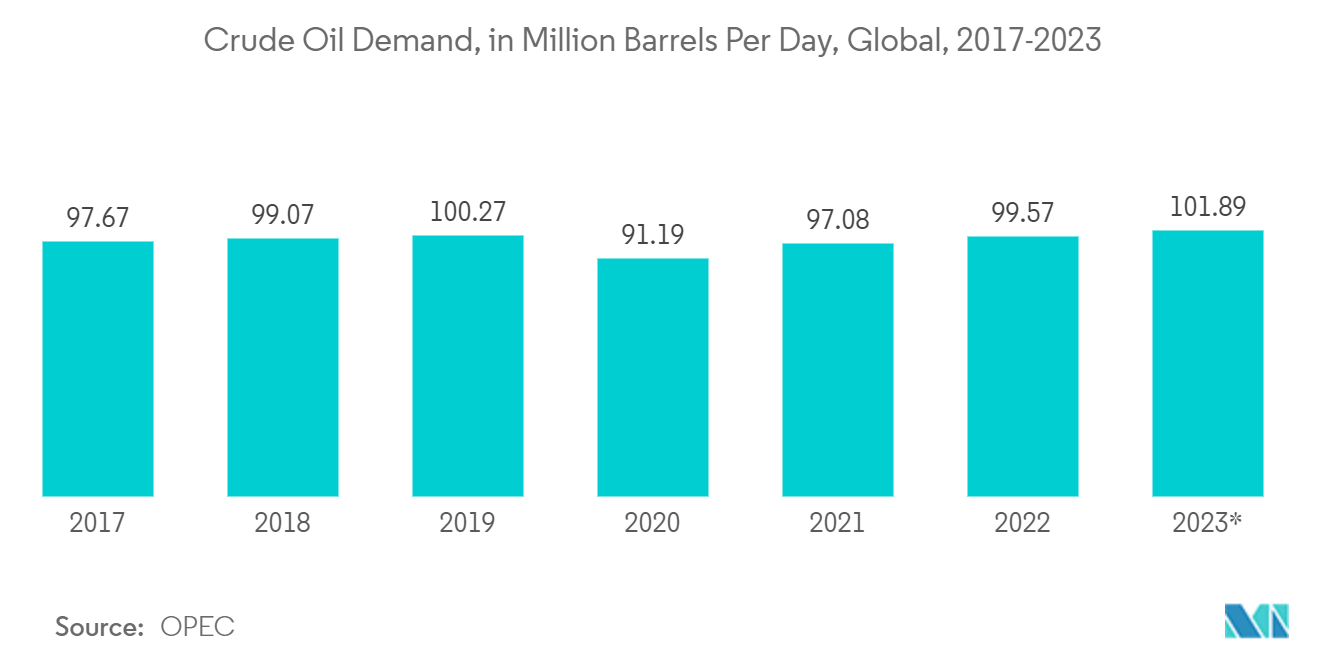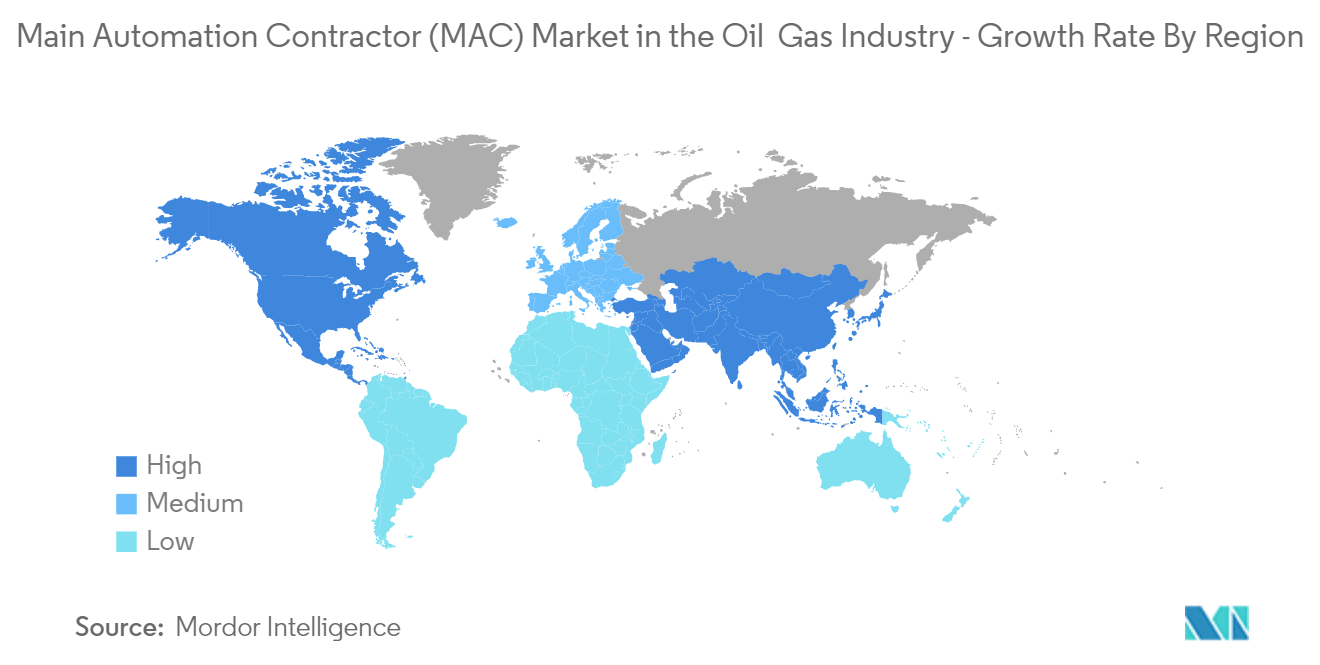Market Trends of Main Automation Contractor (MAC) In Oil & Gas Industry
Upstream Segment to Witness Significant Growth
- The upstream sector of the oil and gas industry involves several drilling activities that must meet stringent government regulations and require intense planning to cut operational costs. Often, the industry deals with vast sets of spatial data to make several decisions. Several process automation tools and analytical engines are employed in the sector to harness the complete power of spatial data.
- Considerable exploration activity in the United Kingdom has led to crucial discoveries such as Glendronach, which is estimated to be the fifth-largest conventional natural gas reserve on the UK Continental Shelf in the millennium. Following Glendronach’s success, companies such as Total Energies plan further exploration activities in the vicinity, which may be a significant source of demand for automation solutions from the upstream oil and gas sector.
- Furthermore, the growing demand for oil and gas also drives opportunities in the studied market as it significantly increases upstream activities. For instance, according to OPEC, the global crude oil demand is anticipated to reach 101.89 million barrels per day in 2023.
- The growing demand for oil & gas is also driving investments in the upstream segment of the oil and gas industry. For instance, according to the Canadian Association of Petroleum Producers (CAPP), oil and natural gas investment in upstream production is anticipated to reach CAD 40 billion (USD 29.4 billion) in 2023, surpassing the pre-pandemic levels.
- Similarly, under the National Outer Continental Shelf Oil and Gas Leasing Program for 2019-2024, the US Department of the Interior is planning to allow offshore exploratory drilling in about 90% of the Outer Continental Shelf acreage. The sector is expected to open up new opportunities to the market.

Middle-East and Africa to Register Considerable Growth
- Middle-East and Africa boast a robust oil and gas sector. In recent years, the industry has mirrored global trends and experienced changes and challenges. Investment across the Asia pacific region is becoming more diverse, and new avenues are being explored, such as more complex offshore and LNG projects.
- Several investments are being made for the region's oil and gas capacity expansions. For instance, in January 2023, the Petroleum Agency of Uganda launched its first oil drilling program to meet its target of first oil output in 2025. The Kingfisher field is part of a USD 10 billion scheme to develop the country's oil reserves under Lake Albert and build a vast pipeline to ship the crude internationally via an Indian Ocean port in Tanzania.
- Similarly, in September 2022, the United Arab Emirates announced that it is accelerating a plan to raise its oil production capacity as it attempts to leverage its crude reserves before the world transitions to cleaner energy. Abu Dhabi National Oil Co. (Adnoc), which pumps almost all the United Arab Emirates oil, wants to produce 5 million barrels daily by 2025. The United Arab Emirates also aims to sell more oil and natural gas while fossil fuel prices stay high.
- Saudi Arabia witnessed exponential growth in oil and gas construction projects in the last four decades. Major oil and gas development projects have been constructed in industrial cities, such as Jubail and Yanbu, including the construction of plants, oil and gas refineries, construction of pipelines, well oil setups for extraction, petrochemical manufacturing industries, and other utilities. Hence, the growing activities in the Middle East & African region are anticipated to drive opportunities in the main automation contractor (MAC) market during the forecast period.


